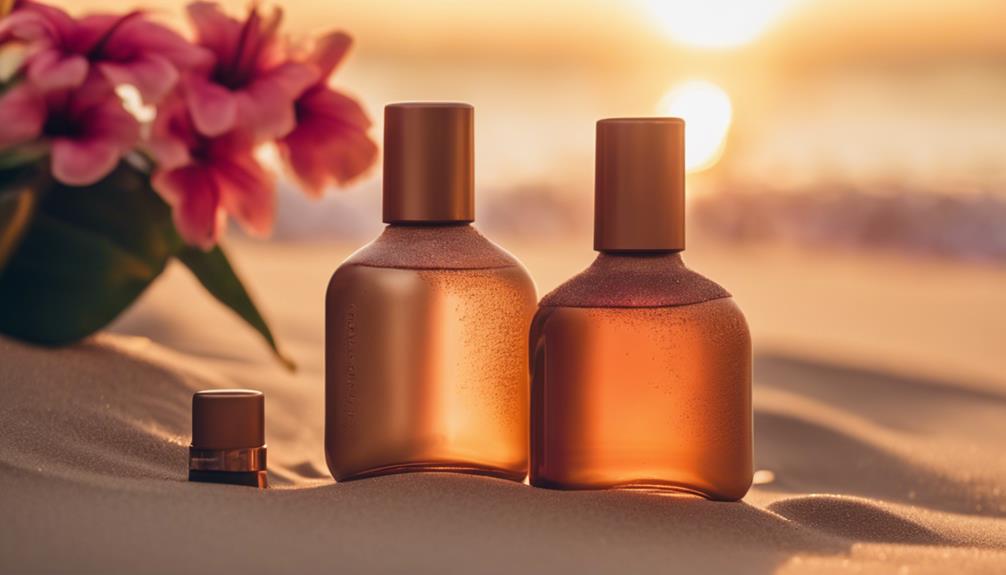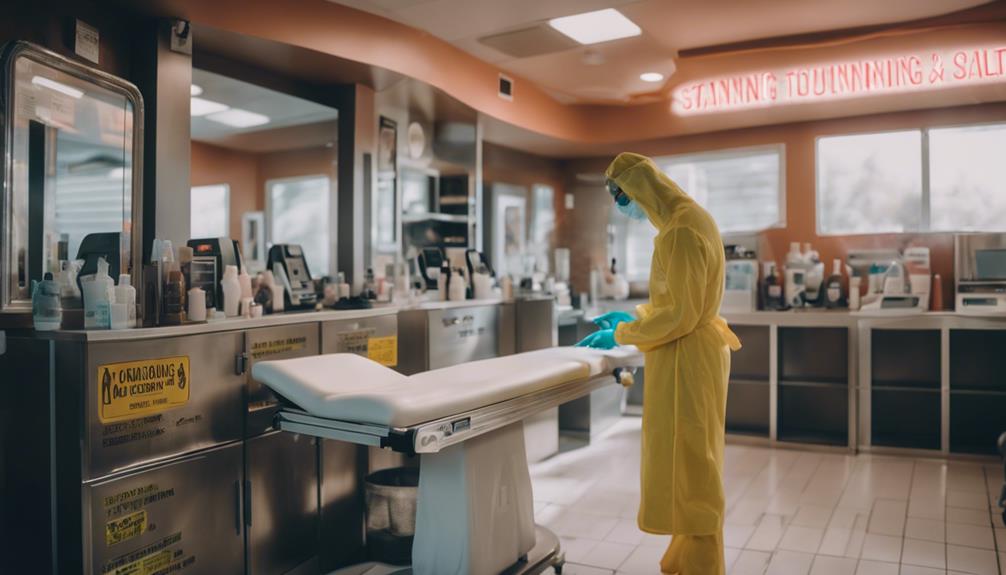European tanning is a skill refined over many generations, blending traditional methods with modern techniques. In the past, expert craftsmen used natural plant tannins, particularly from oak and chestnut trees, to craft beautiful leather products. Today, tanning treatments are tailored to each individual’s skin type, using top-notch equipment and cutting-edge products like the European Gold Flash series. These methods deliver an even, long-lasting tan while reducing exposure to harmful UV rays. Additionally, continued education on skincare and safety measures underscores the importance of preserving skin health. There is so much more to discover about how these age-old traditions influence contemporary practices and elevate the tanning experience.
Key Takeaways
- European tanning emphasizes high-quality products like the European Gold Flash Black series for optimal skin health and tanning results.
- Advanced techniques and equipment ensure customized tanning sessions tailored to individual skin types and goals.
- Historical craftsmanship influences contemporary practices, maintaining a cultural significance in European tanning.
- Health precautions are crucial, with recommendations for sunscreen use and regular skin check-ups to mitigate risks.
Historical Background of Tanning
The historical background of tanning in Europe is deeply rooted in the ancient leather-making trade, where the use of plant tannins, particularly from oak and chestnut, laid the groundwork for enduring practices that would evolve over centuries.
As early as the medieval period, skilled artisans created a diverse array of leather goods that were highly valued in local markets.
The Renaissance further elevated the status of leather, akin to modern cryptocurrencies, with Florence emerging as a center of tanning expertise.
This rich tradition not only reflects the craftsmanship of the time but also signifies the cultural importance of leather in European society.
The methods and materials established then continue to influence contemporary tanning practices, underscoring a lasting legacy.
Key Tanning Techniques
Utilizing advanced equipment and personalized sessions, European tanning techniques focus on achieving ideal skin health and a uniform golden glow while minimizing UV exposure. These methods emphasize safety and effectiveness, making them a preferred choice for many seeking a radiant complexion.
Key tanning techniques include:
- Customized Sessions: Tailored plans based on skin type and tanning goals.
- High-Quality Equipment: Utilization of state-of-the-art tanning beds with regular maintenance for peak performance.
- Skin Safety Protocols: Implementation of public health guidelines to protect skin health.
- Moisturizing Preparations: Use of hydrating lotions before and after tanning to maintain skin elasticity.
Popular Tanning Products

Incorporating high-quality products is vital for achieving ideal results in European tanning practices, enhancing skin health and prolonging the vibrancy of the tan.
Among the most sought-after products are the European Gold Flash Black series of indoor tanning lotions, which include the 4000X, 3000X, and 2000X formulations. These lotions are specifically designed to optimize tanning sessions by providing essential nutrients and hydration to the skin, thereby promoting a deeper, more even tan.
Additionally, these products often contain advanced ingredients that support skin health, ensuring that the tanning process is both effective and safe.
Regular use of such premium products not only enhances the tanning experience but also contributes to the overall appearance and condition of the skin.
Advantages of European Tanning
European tanning offers numerous advantages, including enhanced skin protection and a more uniform tan compared to traditional methods. This sophisticated approach minimizes the risk of burns while providing a golden glow that is both appealing and healthy.
Key benefits of European tanning include:
- Improved skin protection from harmful UV rays
- Achieving a consistent, even tan without patchiness
- Reduced overall UV exposure compared to outdoor tanning
- Enhanced skin integrity, promoting a youthful appearance
Health Risks and Precautions

Tanning, while offering aesthetic benefits, carries significant health risks that necessitate careful consideration and precautionary measures.
Prolonged UV exposure from tanning can increase the likelihood of skin cancer, particularly melanoma, and contribute to premature aging, such as wrinkles and pigmentation changes. Additionally, excessive sun exposure may lead to eye issues, including cataracts and macular degeneration.
To mitigate these risks, it is vital to use broad-spectrum sunscreen, wear protective clothing, and limit exposure during peak hours. Regular skin check-ups are essential for early detection of any changes, and staying hydrated can support skin health.
Aftercare and Maintenance Tips
To guarantee the longevity and vibrancy of a tan, it is essential to follow effective aftercare and maintenance practices.
Proper aftercare not only enhances the appearance of your tan but also supports overall skin health.
Implementing the following tips can greatly contribute to maintaining your bronzed glow:
- Apply a hydrating moisturizer daily to lock in moisture.
- Avoid hot showers and baths, as they can strip your skin of essential oils.
- Use gentle exfoliants to maintain smooth skin without over-scrubbing.
- Rinse off chlorine and saltwater promptly after swimming to prevent dulling.
Influential Figures in Tanning History

Prominent figures throughout history have played significant roles in shaping the art and culture of tanning, influencing trends and practices that resonate even today. One of the most notable is Coco Chanel, whose embrace of bronzed skin in the 1920s established tanning as a fashionable element. Additionally, the Italian artisans of the Renaissance elevated tanning techniques, integrating artistry with practicality in leather goods. These figures, among others, have left an indelible mark on tanning practices.
| Influential Figure | Contribution | Era |
|---|---|---|
| Coco Chanel | Popularized tanning | 1920s |
| Italian Artisans | Advanced techniques | Renaissance |
| King Louis XIV | Fashionable sunbathing | 17th Century |
What Are the Key Differences in Tanning Techniques Between Europe and Other Regions?
When it comes to tanning techniques, Europe tends to favor natural sun exposure, while other regions often rely on indoor tanning beds or spray tans. However, with “tanning success secrets unlocked,” individuals can find the best method for achieving a sun-kissed glow while prioritizing skin health.
Conclusion
To sum up, the art of European tanning embodies a rich tapestry woven from historical practices and contemporary innovations.
Like a Renaissance masterpiece, it offers both aesthetic allure and skin health benefits, while also invoking caution against the shadows of UV exposure.
The delicate balance between beauty and safety continues to shape the tanning landscape, urging practitioners to embrace advanced techniques and meticulous aftercare.
Consequently, European tanning remains a vibrant tradition, constantly evolving yet deeply rooted in its storied past.










